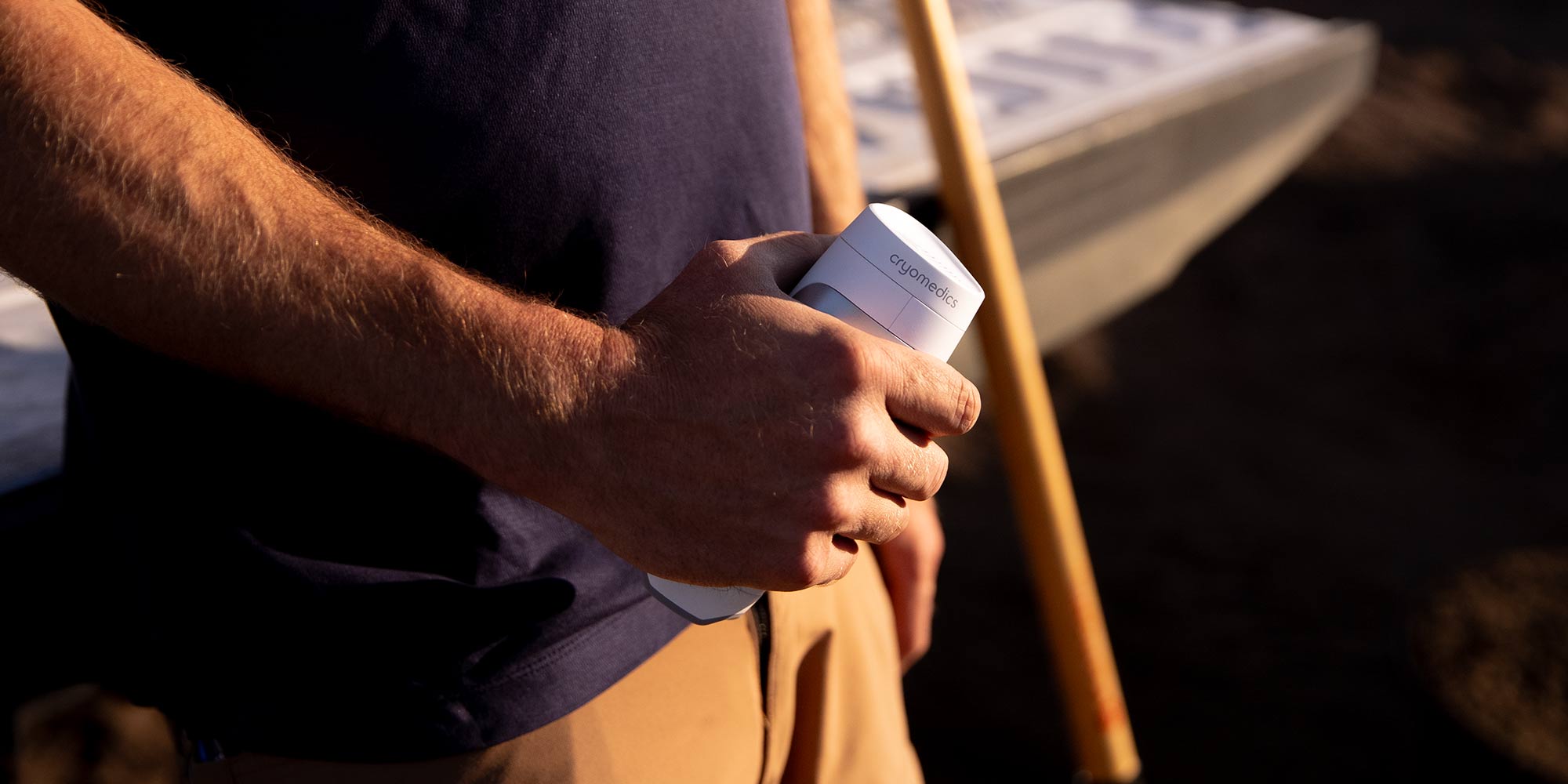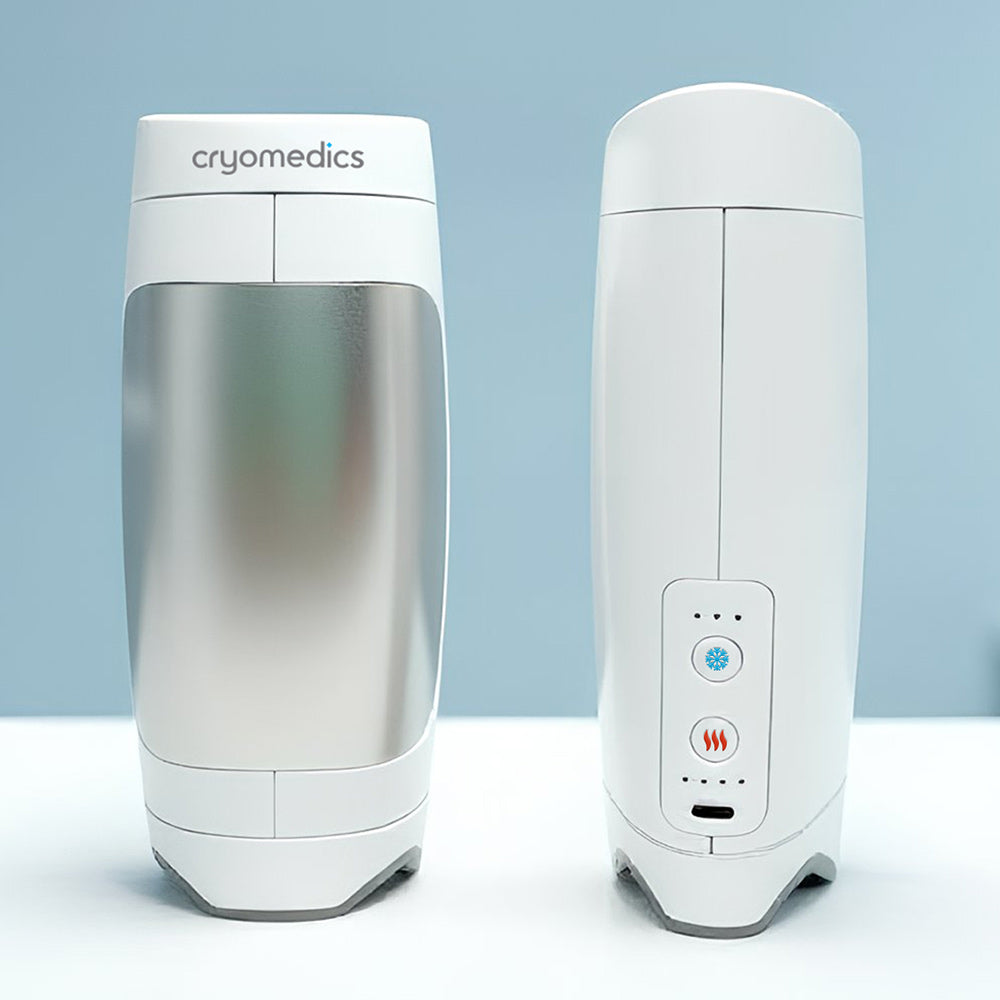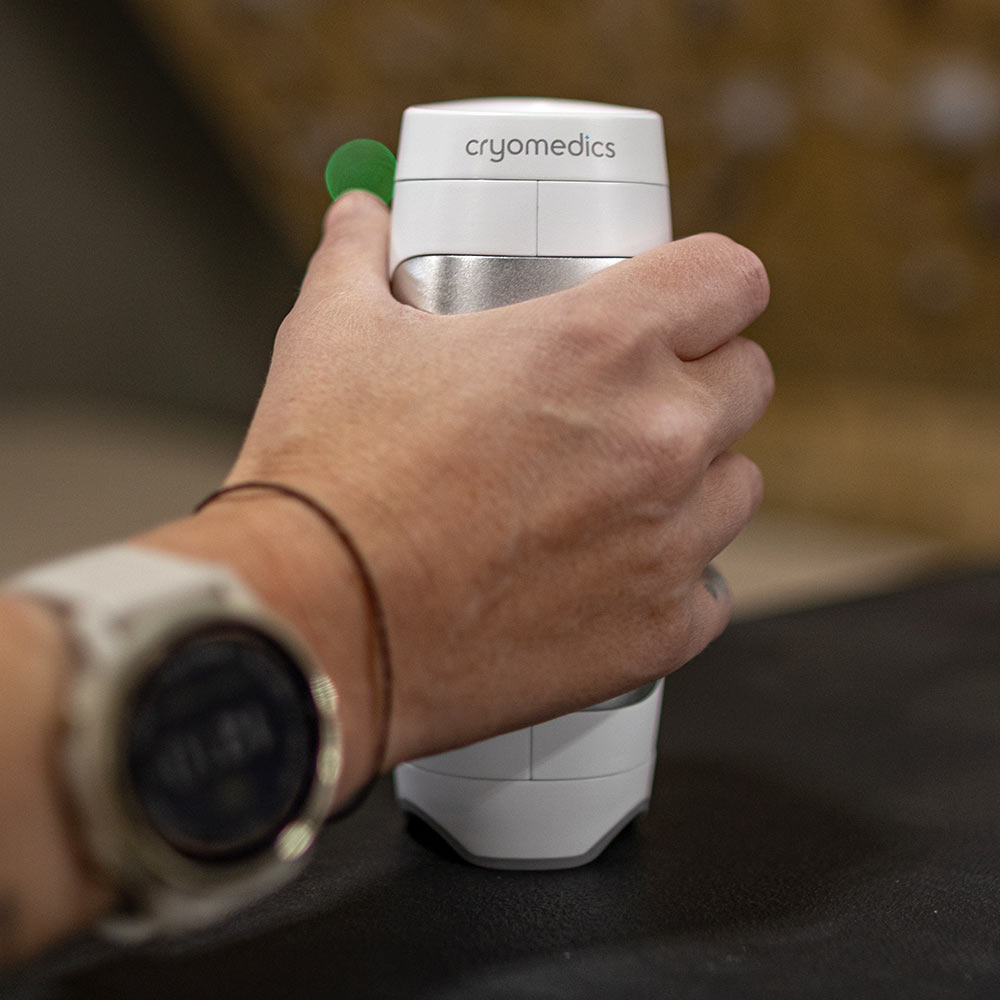Based on 20+ years of Stanford thermoregulation research by Dr. Heller and Dr. Grahn.
Palm cooling is a scientifically proven method to lower your body’s core temperature rapidly by targeting the palms—one of the body’s most efficient heat‑exchange zones. It’s a safe, drug‑free way to enhance endurance, recovery, and comfort across athletic, occupational, and wellness applications.
When your body overheats—during intense exercise, a hot flash, or long hours outdoors—your performance, focus, and comfort decline. Cooling the palms helps reverse this effect by drawing heat from the bloodstream, stabilizing temperature from the inside out.

The Science Behind Palm Cooling
The palms of your hands contain dense clusters of blood vessels called arteriovenous anastomoses (AVAs). These act like natural radiators, enabling fast heat exchange between your blood and the environment. When cooled within an optimal range (12–16 °C or 54–61 °F), these AVAs allow cooled blood to circulate through the body, reducing core temperature quickly and safely.
Stanford Discoveries
Stanford University researchers Dr. H. Craig Heller and Dr. Dennis Grahn discovered that palm cooling dramatically improves endurance and strength by preventing thermal fatigue. Their studies found:
- Up to 46 % longer endurance during aerobic exercise
- Up to 144 % higher training volume in resistance exercises
- Faster heart‑rate recovery and reduced perceived exertion
By stabilizing internal temperature, palm cooling helps maintain ATP levels in muscle tissue, delay fatigue, and accelerate recovery between sets.

Why Palm Cooling Works Better Than Other Methods
Common cooling methods—like ice packs or neck towels—lower surface temperature but do little to affect internal body heat. Palm cooling directly targets blood circulating through AVAs, enabling efficient heat removal.
Comparative benefits
- Palm cooling: Lowers core temperature, reduces heart rate, enhances endurance.
- Neck cooling: Provides comfort but limited physiological change
- Ice packs: Often too cold; cause vasoconstriction that blocks heat transfer.
The ideal cooling range (12–16 °C) keeps blood vessels open and maximizes heat transfer without discomfort.
Applications Beyond Athletics
Palm cooling is now being used by diverse groups who need fast, reliable temperature control.

Athletic Performance
- Palm cooling boosts endurance by up to 46% and training volume by over 40% in controlled studies.
- By stabilizing core temperature, it delays fatigue and preserves muscle power between sets.
- Athletes report feeling stronger, more focused, and better recovered after sessions using palm cooling.

Menopause & Hot Flashes
- Palm cooling rapidly lowers core temperature and can shorten hot flash severity and duration in under 1 minute.
- Hot flashes occur when fluctuating estrogen levels narrow the body’s thermoneutral zone, making even small temperature changes trigger intense heat and sweating.

Heat Stress & Outdoor Work
- During heavy exertion in the sun, core temperature can rise 1°C every 5–7 minutes, leading to dehydration, heat exhaustion, or heat stroke if unmanaged.
- Palm cooling accelerates recovery by helping the body dissipate heat 2–3 times faster than passive rest, reducing heart rate and strain on the cardiovascular system.
- Youth athletes and children are more prone to heat stress because they sweat less efficiently and generate more metabolic heat relative to body size — palm cooling offers a safe, non-invasive way to help them recover faster after play or competition.

Anxiety & Vagus Nerve Regulation
- Palm or neck cooling stimulates the vagus nerve, which slows heart rate by 5–10 bpm and activates the body’s relaxation response.
- This gentle activation helps reduce anxiety, steady breathing, and restore calm within minutes.
- Regular use can support better stress resilience and emotional balance throughout the day.
The Cryomedics Approach
Science you can hold
The Cryo‑1 device by Cryomedics turns decades of research on palm and vagus nerve cooling & warming into a simple handheld device. Backed by clinical and athletic trials, it helps improve performance, reduce hot flashes, reverse chills, ease anxiety, and fight heat stress. Explore the products below and see how cooling science fits your life.

Cryo-1 Key Specs
The Cryo‑1 device by Cryomedics applies palm cooling science in a portable, battery‑powered design.
Cryo‑1 Key Specs:
- Cooling: 12 °C / 14 °C / 16 °C (54 °F / 57 °F / 61 °F)
- Warming: 35 °C / 39 °C / 43 °C (95 °F / 102 °F / 109 °F)
- Battery life: 80 min cooling / 175 min warming
- Portability: Lightweight, USB‑charged, pocket‑sized
Unlike ice, Cryo‑1 maintains stable temperatures to ensure continuous heat exchange without vasoconstriction or discomfort.

How to Use Palm Cooling Effectively
- With power set to maximum (or set for comfort) hold Cryo‑1 in your palm for 60–120 seconds.
- Rest briefly and repeat between sets or during recovery.
- For menopausal or stress relief, apply as soon as symptoms begin.
Pair palm cooling with hydration and controlled breathing for optimal results.
Frequently Asked Questions
What does the science say about palm cooling?
Stanford-led research shows palm cooling can increase training volume by up to 144%, extend endurance in heat by 43%, and shorten hot flashes from 10 minutes to under 60 seconds.
Is palm cooling safe?
Yes. When used within the 12–16 °C range, palm cooling is safe and comfortable.
Can Cryo-1 replace medication for hot flashes or anxiety?
Cryo-1 is a non-drug alternative that may help reduce symptoms, but it should not replace prescribed treatments without your doctor’s advice.
Can palm cooling replace ice therapy?
No. Ice is ideal for acute injury inflammation; palm cooling regulates internal temperature for endurance, recovery, and stress relief.
Who can use palm cooling?
Anyone can use palm cooling to their benefit. Athletes, menopausal women, outdoor workers, and individuals managing heat or anxiety are among the beneficiaries.
References
- Grahn DA, Cao VH, Heller HC. J Appl Physiol. 2005. PubMed
- Grahn DA, Cao VH, Nguyen CM, Liu MT, Heller HC. J Strength Cond Res. 2012. PubMed
- Reid RL et al. Randomized clinical trial of handheld cooling device. Climacteric. 2015. PubMed
- Heller HC, Grahn DA. Stanford Research Reports, 2012–2017. Researchgate
- Freedman RR. Physiology of hot flashes. Am J Hum Biol. 2001. PubMed
- Freedman RR. Menopausal hot flashes: mechanisms, endocrinology, treatment. Thieme. 2005. Thieme
- Koehn J et al. Neck cooling induces blood pressure increase and peripheral vasoconstriction in healthy persons. Auton Neurosci. 2020. PubMed
- Venugopal V et al. Heat stress and its impact on productivity of workers: a meta-analysis. Int J Environ Res Public Health. 2022. PMC
- Hostler D et al. Firefighter rehabilitation with active cooling during live-fire training. Prehosp Emerg Care. 2013. PubMed
- Brearley M et al. Exertional heat illness in golfers: risk factors and prevention. J Sports Sci. 2025. Taylor & Francis
- International Labour Organization. Working on a warmer planet: The impact of heat stress on labour productivity. ILO Report. 2019. ILO
- Center for American Progress. Extreme heat is more dangerous for workers every year. 2019. American Progress
- Federation of American Scientists. Impacts of extreme heat on labor productivity. 2021. FAS
- Müller T et al. Brief cold stimulation of the neck region increases HRV and reduces heart rate. Front Physiol.2019. PubMed
- Azevedo TM et al. Cold facial immersion reduces panic symptoms via diving reflex in panic disorder patients. Front Psychol. 2021. PubMed
- Lee JY et al. Neck cooling during high-intensity exercise reduces heat strain and stress markers in adolescent athletes. Life (Basel). 2023. MDPI
- Effects of menopause on temperature regulation. Temperature V12 2025



